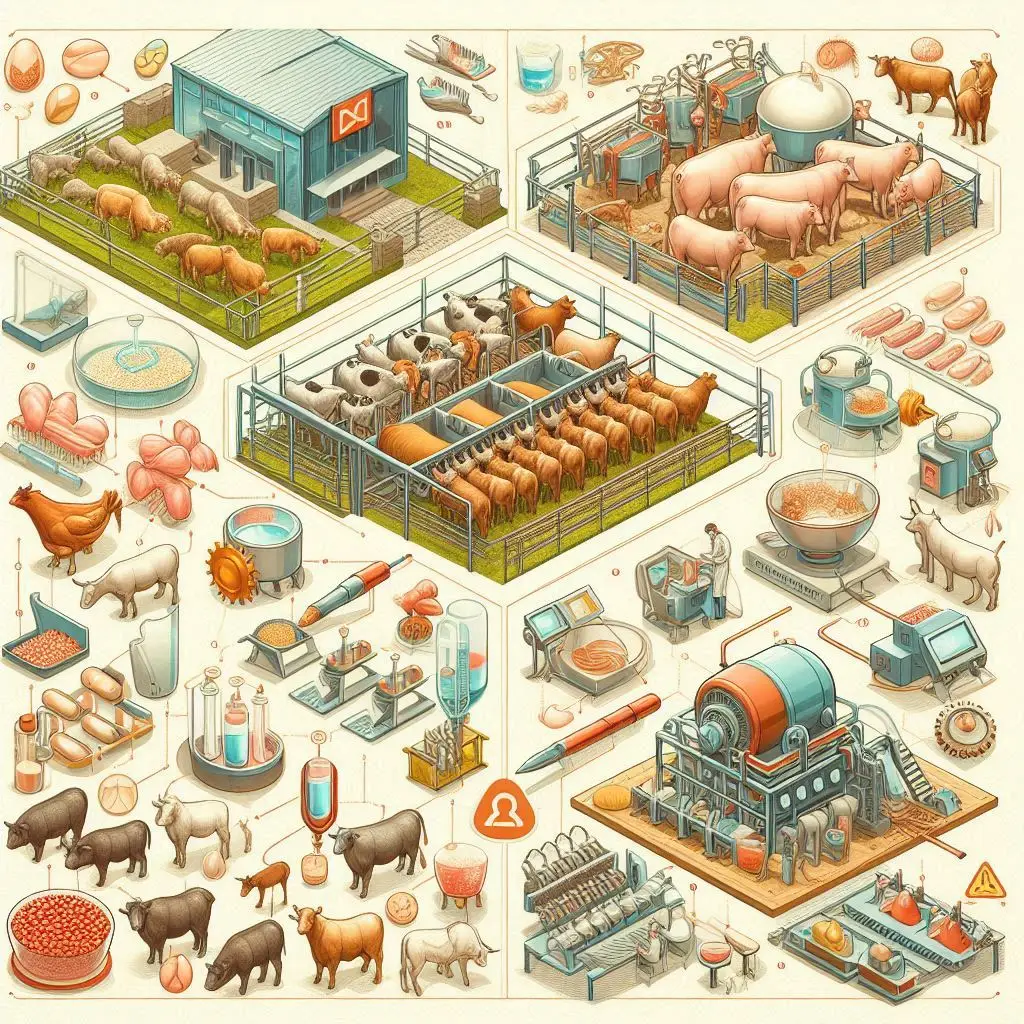Selection Indices

Introduction
Selection indices serve as powerful tools in plant and animal breeding. They help breeders identify superior genotypes based on multiple traits at once. By combining various traits into a single score, breeders can make informed decisions. This approach considers the overall genetic potential rather than focusing on just one characteristic. In this article, we will explore the methods of selection, the construction of selection indices, and their practical applications in breeding programs.
Methods of Selection
Breeders use two main types of selection: natural selection and artificial selection. Natural selection occurs when organisms better adapted to their environment survive and reproduce. In contrast, artificial selection involves human intervention to select for specific traits. Artificial selection can further divide into three methods:
- Tandem Selection: This method focuses on one trait at a time until breeders achieve a satisfactory level.
- Independent Culling Levels: In this approach, breeders select individuals based on multiple traits, with each needing to meet a minimum standard.
- Selection Index Method: This method calculates a score that combines multiple traits. It allows for better overall performance in breeding programs.
Among these methods, the selection index method stands out. It effectively improves genetic traits simultaneously.
Construction of Selection Indices
To construct a selection index, breeders need several critical data points:
- Genetic and Phenotypic Variances: Breeders must understand the heritability of each trait. They calculate variances as follows:
- VA=4σs2VA=4σs2 (Additive genetic variance)
- VP=σs2+σd2+σw2VP=σs2+σd2+σw2 (Phenotypic variance)
- Genetic and Phenotypic Covariances: These covariances help breeders understand the relationships between traits:
- CovA=4CovS(xy)CovA=4CovS(xy)
- CovP=CovS(xy)+CovD(xy)+CovW(xy)CovP=CovS(xy)+CovD(xy)+CovW(xy)
- Relative Economic Value: Breeders must assess each trait’s economic importance to assign appropriate weights in the index.
Breeders can use two main methods for calculating selection indices:
- Matrix Method: This method involves setting up a matrix of variances and covariances to derive the selection index.
- Algebraic Equations: Breeders can establish normal simultaneous equations to find partial regression coefficients for traits.
Uses of Selection Indices
Breeders utilize selection indices to maximize genetic gain in breeding programs. They select individuals that exhibit desirable traits. This approach proves particularly useful when multiple traits are important. It allows breeders to make informed decisions that consider the overall genetic potential. Numerous studies demonstrate the effectiveness of selection indices. Their use leads to greater genetic improvement compared to other methods like independent culling or tandem selection. Breeders widely use selection indices in various plants, including maize, wheat, rice, and soybean. Additionally, many studies apply selection indices in animals to enhance performance. Breeders commonly evaluate selection indices using four criteria:
- Correlation coefficients of index and breeding values (R_HI): Maximizing this criterion yields the maximum response.
- Genetic gain of total traits (ΔH): This criterion considers the simultaneous improvement of the genetic value of several traits.
- Expected gain for each trait by the selection index (ΔG): Breeders calculate this for each trait using the index.
- Relative efficiency (RE): This criterion compares the genetic gain achieved by the index to direct selection based on the trait alone.
The matrix form of the correlation coefficient of index and breeding values (R_HI) is given by: RHI=σHIσI2σH2=a′Gbb′Pba′GaRHI=σI2σH2σHI=b′Pba′Gaa′Gb In this equation, $\sigma_{I}^{2}$, $\sigma_{H}^{2}$, and $\sigma_{HI}$ represent the variance of the index, the variance of breeding value, and the covariance of index and breeding value, respectively. Here, P denotes the phenotypic variance–covariance matrix, and G denotes the genetic variance–covariance matrix. The vectors a and b represent the economic values of traits and the index coefficients, respectively. Breeders can calculate the genetic gain of total traits using the following equation: ΔH=k×RHI×a′Ga=kRHIσHΔH=k×RHI×a′Ga=kRHIσH In this equation, k represents the standardized selection differential.
Regularized Selection Indices
When breeders measure many phenotypes, errors in estimating genetic and phenotypic parameters can lead to overfitting. This issue may reduce the accuracy of indirect selection. Breeders often use reduced-rank methods (e.g., principal components) and penalized regression to confront overfitting in high-dimensional regression problems. These methodologies can integrate into the selection index framework to derive regularized selection indices. For example, a regularized selection index based on principal components (PC-SI) can be expressed as: I=b′x=∑j=1pbjxjI=b′x=∑j=1pbjxj In this equation, b represents the vector of index coefficients derived using principal components regression. Regularized selection indices improve the accuracy of indirect selection compared to standard selection indices, especially when dealing with high-dimensional data.
Conclusion
Selection indices empower breeders to make informed decisions and maximize genetic gain in plant and animal breeding programs. By combining multiple traits into a single score, selection indices consider the overall genetic potential of individuals. This approach leads to greater genetic improvement compared to other selection methods. Constructing selection indices requires careful consideration of genetic and phenotypic parameters, as well as the relative economic value of traits.
Regularized selection indices, such as those based on principal components or penalized regression, can further enhance the accuracy of indirect selection when dealing with high-dimensional data. As breeding objectives and environmental conditions change, breeders must regularly update their selection indices.
By mastering the use of selection indices, plant and animal breeders can accelerate genetic progress. They can develop superior genotypes that meet the evolving demands of the agricultural industry.
For more pearls of Vets Wisdom:
https://wiseias.com/partitioning-of-food-energy-within-animals/






Responses